Inside Lord's, the
Home of Cricket

COLIN SIMPSON
THE eyes of the sporting world – or at least the parts of it that play cricket – were trained on Lord’s one Sunday last year for the tumultuous and dramatic final of the World Cup.
Ten weeks of matches at grounds across England and in Wales reached a climax as England beat New Zealand by the narrowest of margins.
The drama, played in front of packed stands, was a reminder of Lord’s unique character and qualities as a sporting venue. For the UK’s armchair fans, it was the first chance to watch live cricket on terrestrial TV since 2005.
The spotlight will swing back to the ground next week as the Lord’s Test – one of the highlights of the British sporting summer – gets underway on Wednesday. England play Australia in the second Ashes Test of the five-match series, and the home side will be hoping to regroup after losing the first Test at Birmingham’s Edgbaston ground.
Lord’s is the home of both cricket and Marylebone Cricket Club, which owns the ground and is one of the world’s great clubs.
So what gives with these two institutions, one a storied sports venue and the other a venerable private members’ club? What makes them so special?
Laying Down the Law for More Than Two Centuries

THE current Lord’s is the third cricket ground to bear the name. The first was opened by entrepreneur and cricketer Thomas Lord in Marylebone in 1787, the year MCC was founded as a gentleman’s club. The following year MCC drew up the first laws of cricket. Lord opened a second ground nearby in 1809 before moving again to the current site in St John’s Wood in 1814. In 1877, Middlesex County Cricket Club started playing at Lord’s, where they remain to this day. In 1884, the ground hosted the first Test, England trouncing Australia (oh happy days!)
The Waiting Game: Becoming a Member
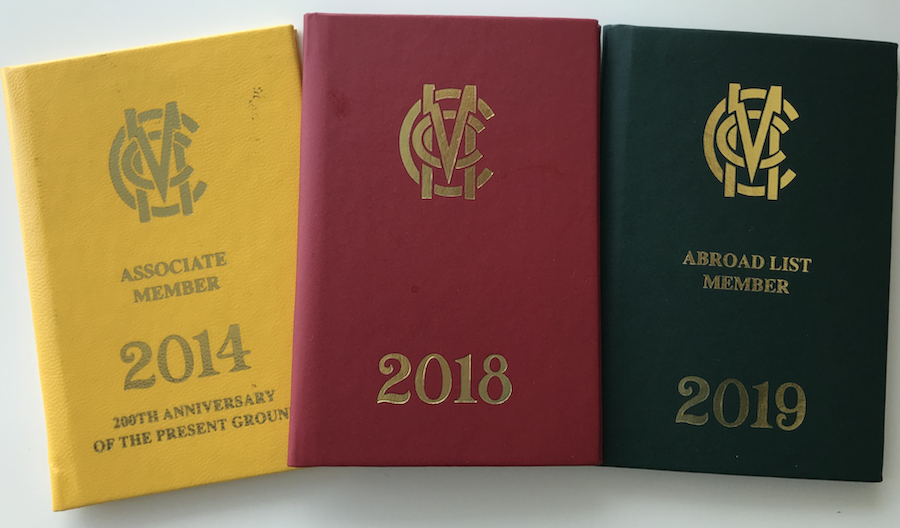
MCC membership is highly prized, so patience is needed as there’s a (wait for it!) 29-year waiting list. The length of time varies over the years – I was allowed in after just 20 years. The joke is that prospective members scour the obituary pages of the Daily Telegraph to see whether any members have died, as this would nudge them up the waiting list. You have to be nominated by a full member, seconded by another, sponsored by a third, and endorsed by a committee member or other official. I was interviewed at Lord’s by the official who endorsed my application. I went along in midwinter early in 1997 at a time when the old grandstand had been bulldozered and construction of the sleek new one had yet to begin. The grey skies, bitter cold and the gap where the stand had been created a very different view from the familiar sun-bathed image of the ground in high summer. We met in the Committee Room and had a cordial chat that seemed designed to ensure I was a genuine cricket fan rather than someone just seeking the kudos of belonging to one of the world’s leading clubs. Members include former prime ministers Sir John Major, David Cameron and Theresa May, the Queen’s husband Prince Philip and her heir, Prince Charles, and Sir Mick Jagger and Eric Clapton. My full membership came through in 2016, giving me access to Tests, one-day internationals and other matches at Lord’s. Annual subscriptions range from £563 for those living within 40 miles of central London down to £130 for “abroad list” members like me. While on the waiting list, candidates are offered associate membership, which gives access to Lord’s on some big-match days, plus other benefits. There are 18,000 full members and 4,000 associate members. Cricketers who turn out for MCC’s teams can be fast-tracked to player’s membership.
Lord's and Ladies: Role in the Game, Reputation
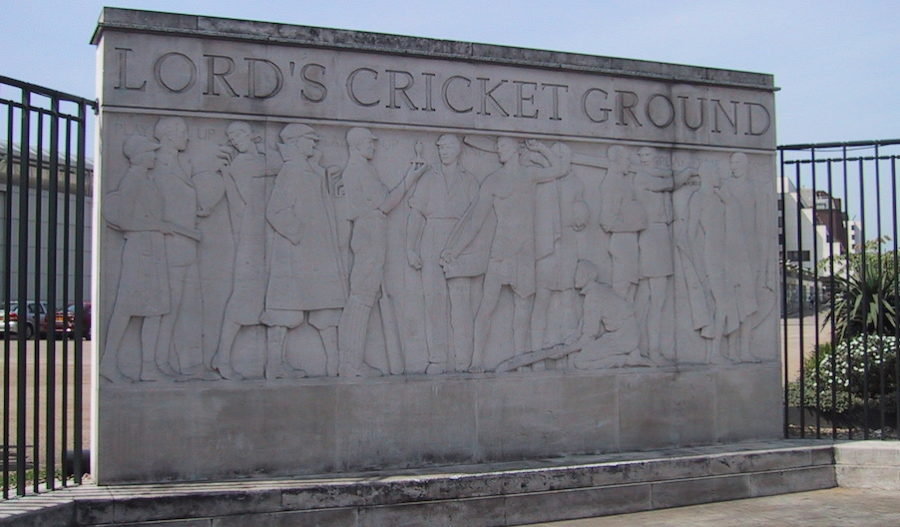
PART of MCC’s prestige comes from its position as the body that draws up the laws of the game. It also presents itself as the champion of what it describes as the “spirit of cricket”. It used to have an even more prominent role – until 1993 it ran the game worldwide, and the England team toured under its name until 1977 and wore its colours until 1997. MCC supports the game in various ways – for example, it played an important role in encouraging the emergence of the Afghanistan team. MCC is often seen as a rather staid and stuffy organisation with an ageing male membership, but has made efforts to shrug this off. Most significantly, after operating as a men-only bastion for more than two centuries, it voted to allow women to join in 1998. A record 134 women became full members this year.
Headquarters: The Pavilion and the Long Room
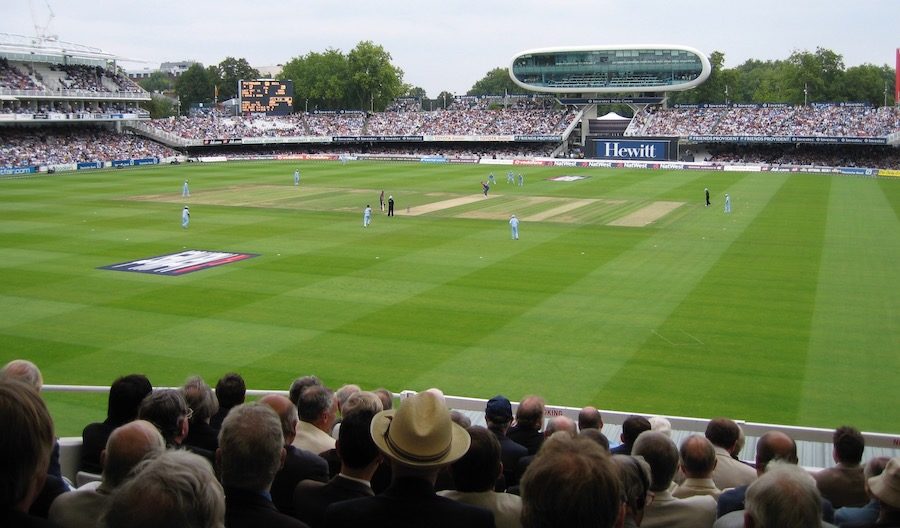
IF LORD’S is the home of cricket, the Pavilion – and particularly the Long Room inside – is its spiritual epicentre. The room is aptly named, a long, high space stretching from north to south along the central part of the building between the square towers at either end. Members gather here to watch play, perched on tall, heavy stools that let them see over the window ledges. Famously, the players walk down from the changing rooms upstairs and pass through this room on their way out through the two doors and the little gate beyond that lead to the field of play. The members invariably applaud members of both teams, though very occasionally they may stay silent if they feel a returning batsman has given his wicket away foolishly or somehow offended the spirit of the game. If the atmosphere in the ground tends to be subdued, in the Long Room it can approach the sepulchral even during a major match. There tends to be little conversation as the members follow the play. Still, it’s such a famous place that it’s always a thrill to walk in there, even if you don’t always feel inclined to tarry long (for some reason, when writing about MCC and Lord’s you can’t help sounding like traditionalist British politician Jacob Rees-Mogg). The walls are hung with paintings of cricket matches, and there are historic bats and other items from the museum’s collection on display. Some of the portraits of great players are outstanding. Members can use other parts of the Pavilion, such as the Old Library and the Reading Room.
Other Stands and Facilities

LORD’S is noted for the variety and quality of its stands and other buildings, and is undertaking an ambitious rebuilding programme. The stands are in a variety of styles that somehow comes together to form a distinctive and coherent whole. The Warner, Tavern and Allan stands are reserved for MCC members and their guests, while the Grandstand and the Mound, Compton and Edrich stands are open to the ticket-buying public. The space-age media centre, a cause of consternation among more conservative members when it was built in 1999, has become a much-loved feature of the ground. The next stage of the rebuilding programme will involve replacing the Compton and Edrich stands and adding catering facilities and extra seats. An oddity of the Lord’s playing field is its famous slope – looking out from the pavilion, the right-hand boundary is 2.5 metres lower than the left-hand one. This sometimes causes problems for bowlers who are unfamiliar with the ground. Away from the playing area, there is one of the world’s oldest sport museums which has an outstanding collection of cricket-related items, including the famous yet diminutive Ashes urn. The library has more than 20,000 cricket books and other documents. There is also a court for those who play real tennis, the arcane original version of the game.
Match-Day Experience
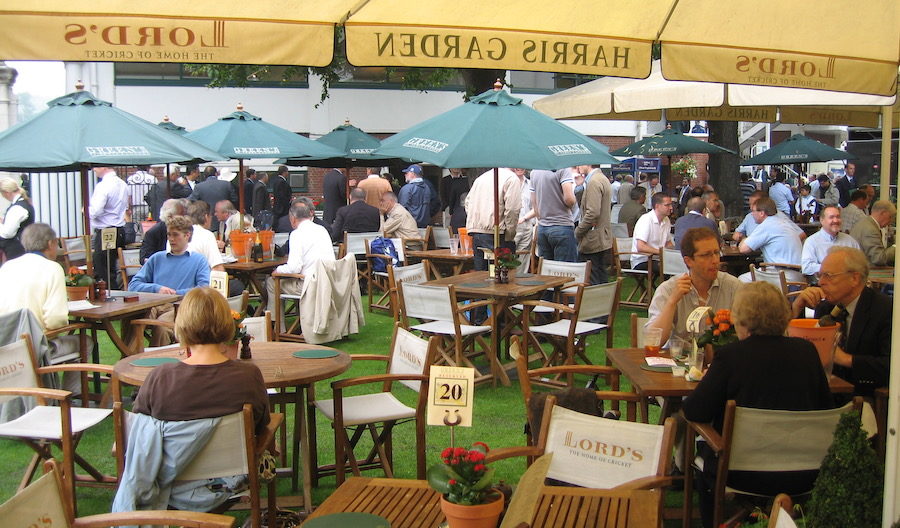
THE noisy atmosphere at the World Cup final was not typical of Lord’s, where you are more likely to hear a hum from the crowd than a roar. It is, nevertheless, a fantastic place to watch cricket, with great views from all parts of the ground. This is partly because of its relatively modest size, though the rebuilding work will increase its capacity from 28,500 to 31,000. This hardly compares with huge grounds in other countries – Melbourne Cricket Ground, for example, holds a shade over 100,000. Still, there is a wonderful air of expectancy in North London on a big-match day, such as the first day of an Ashes Test. Supporters stream from St John’s Wood Underground station wearing sun hats and clutching picnic baskets. And during matches there can be a buzz of excitement as a crowd-pleasing batsman strides out to the crease. The fact that fancy dress is banned also contributes to the relatively subdued atmosphere – at Edgbaston last week supporters turned up as President Trump, the Pope and his cardinals, Laurel and Hardy, and Britain’s Queen. And the Barmy Army, a group of England fans known for loud chants, songs and trumpet playing, is not normally in evidence at Lord’s – musical instruments are banned, as are flags. One crowd tradition, in particular, fails to dispel the accusations of staidness sometimes levelled at MCC members. Supporters tend to grow restive during uneventful periods of play – this, contrary to the impression given in the World Cup final, can happen in cricket – and start a Mexican wave. The wave sweeps round the ground, with fans rising enthusiastically to their feet as it reaches them, until it reaches the Pavilion. There, members in their red-and-yellow ties remain firmly seated, earning resounding boos from the rest of the ground.
Pimm's, Anyone? Food and Drink
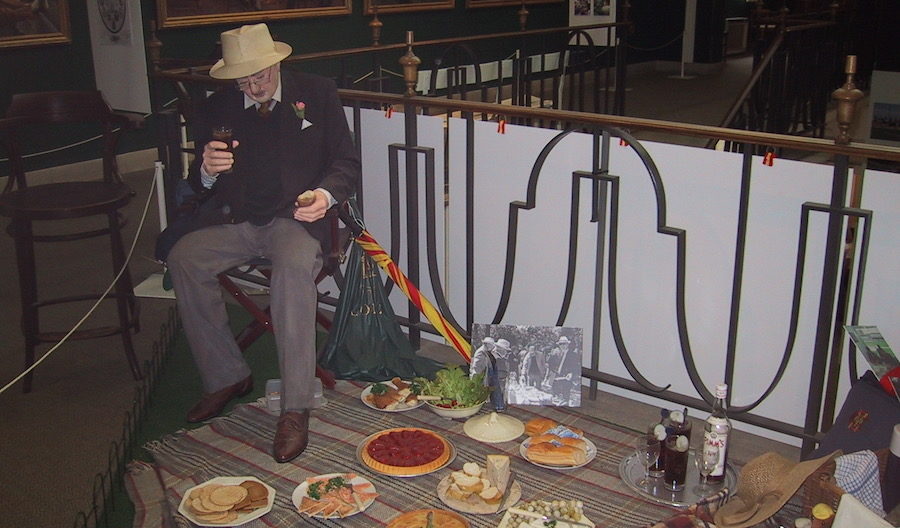
ON MATCH days there are numerous places all over Lord’s where visitors can buy something to eat and drink, ranging from the usual food court fare at the nursery end to the alfresco Harris Garden and smart restaurants. Members also have a wide choice in the areas reserved for them. The Long Room Bar stretches through the Pavilion on the ground floor immediately behind the Long Room. The tradition of public school dinners lingers there, so expect a roast, but there are other choices such as salads and perhaps a curry. A favourite place of mine, and many others, is the Bowlers’ Bar at the north end of the Pavilion, where you can take your beer outside and sit on the white benches to watch the cricket. There’s also a members’ lounge and a members’ bar. The members and guest stands have their own catering facilities, most notably those in the recently rebuilt Warner Stand. Many spectators in these areas prefer to bring their own food, often in cool boxes that may also contain a chilled bottle of Chablis. Lord’s is the only international cricket ground in the world that lets fans bring in alcohol. People used to have a seemingly endless supply of Champagne and wine in these boxes which they would consume steadily throughout the hours of play, though there are now pretty strict limits on how much alcohol you can bring in to the ground.
Rules, Regulations and Dress Codes
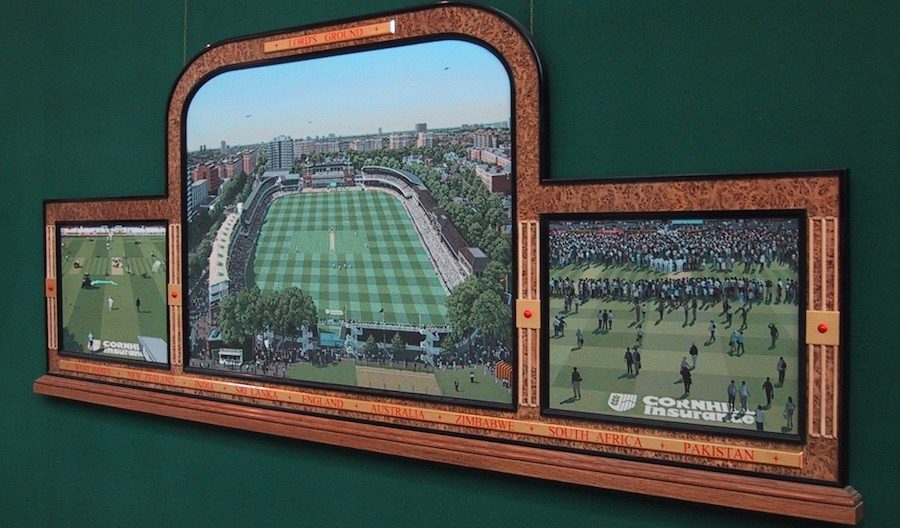
PART of the club’s stuffy reputation derives from its air of officiousness. Members are issued with a book of club rules AND a separate book of regulations, and the detailed dress codes have raised eyebrows. There was some amused comment when the club issued guides illustrated with photos showing what items of clothing were and were not allowed in various parts of the ground. For example, gentlemen entering the Pavilion on match days may not wear espadrilles, “beach-style flip-flops”, denim, combat-style trousers, camo gear or “torn, ripped or unclean clothing”. The Pavilion stewards enforce the rules and regulations with quiet zeal, and are particularly unsmiling if anyone moves to or from their seat during an over. On one occasion, a movement in the crowd near me distracted the batsman, causing him to halt play. A steward told the culprit, in a despairing tone of voice more suited to some major calamity: “Look what you’ve done – you’ve stopped the cricket.” However, Sue reports that the stewards in other parts of the ground treat her with the utmost courtesy and respect when I desert her and head off to the Pavilion for a slice of jam roly-poly at the tea interval (guests aren’t allowed in on big-match days).
Egg and Bacon
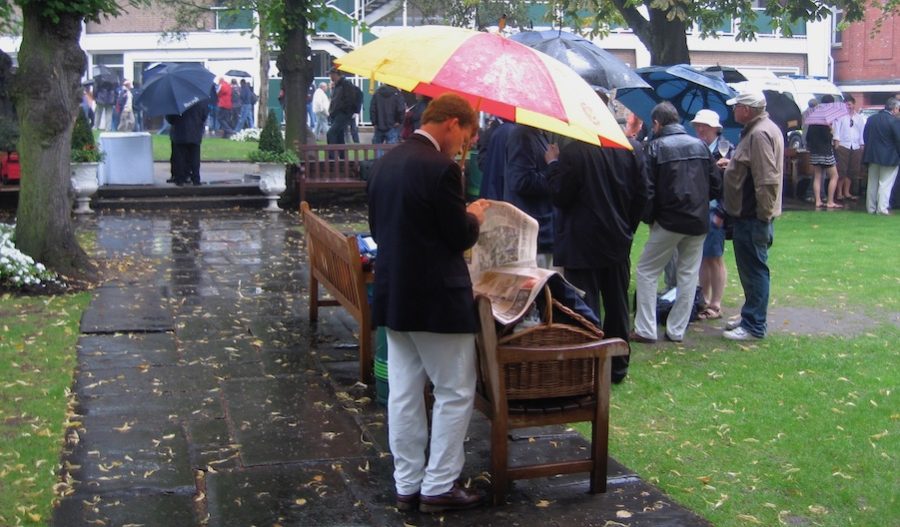
ONE of the joys of finally becoming an MCC member is that you’re allowed to wear the club’s famous red and yellow colours. Supposedly only members can do this, though I’m not sure what sanctions are taken against offending non-members. The first thing you do is buy a stirpey MCC tie. It doesn’t stop there, though. There’s a huge range of MCC merchandise in the members’ shop, and I was soon stocking up on red-and-yellow socks, boxer shorts, nightshirts (yes!), handkerchiefs, and keyrings, plus – to cover all eventualities – an umbrella and a sunhat. Some take it too far, though, and buy lurid blazers and caps in the club colours.
The Players Love It There Too

APPEARING at the home of the game is a highlight of any cricketer’s career, and those who perform well have their names honoured there permanently. The home and away dressing rooms each have honours boards, one for batsmen and one for bowlers. Anyone scoring 100 runs or taking five wickets in an international match has their name written on these boards, joining a roll-call of some of the most famous names in the game. Honours boards for women players were introduced this year. Outstanding all-rounders such as Sir Ian Botham and Andrew Flintoff have their names on both boards. Cricketers often speak enthusiastically about the experience of playing at “headquarters”. The quality of the food served in the players dining room gets special mention, and many appreciate the way they’re treated by the staff. Foreign players’ enthusiasm for appearing at Lord’s sometimes backfires against England. Many raise their game when they take that spine-tingling walk through the Long Room in the footsteps of the greats, past the applauding members and out on to the hallowed turf. As a result, England sometimes struggle there.
So there you have it, not just an outstanding cricket ground but one of the world’s great sports venues. And a unique, historic cricket club.
The only problem is that, having written this piece, I now really wish I was going to the Test next week.
Top tip: If you don’t want to wait 29 years for membership but would like to see the Long Room and the rest of the Pavilion then you can book a tour of Lord’s.
Main photo: The Lord’s Pavilion.
Updated January 2020
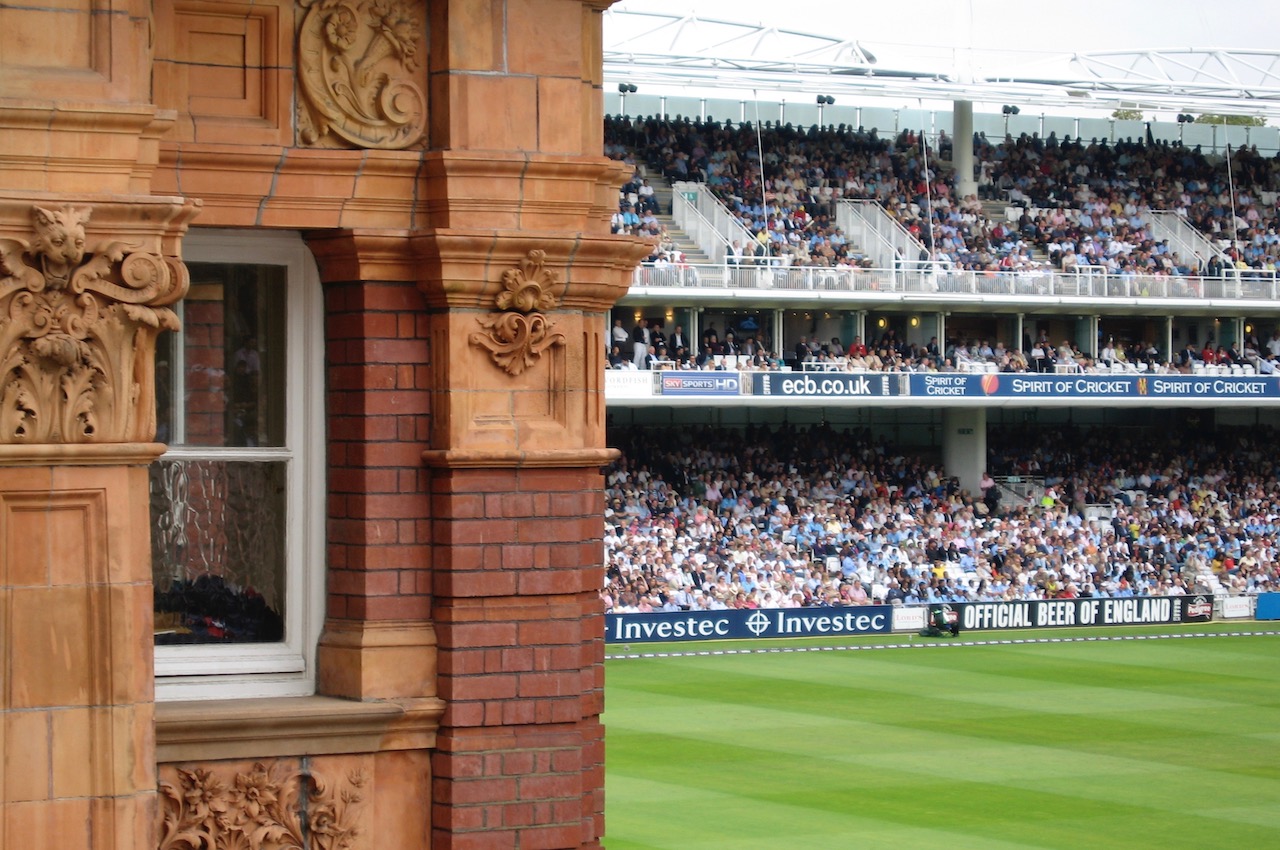
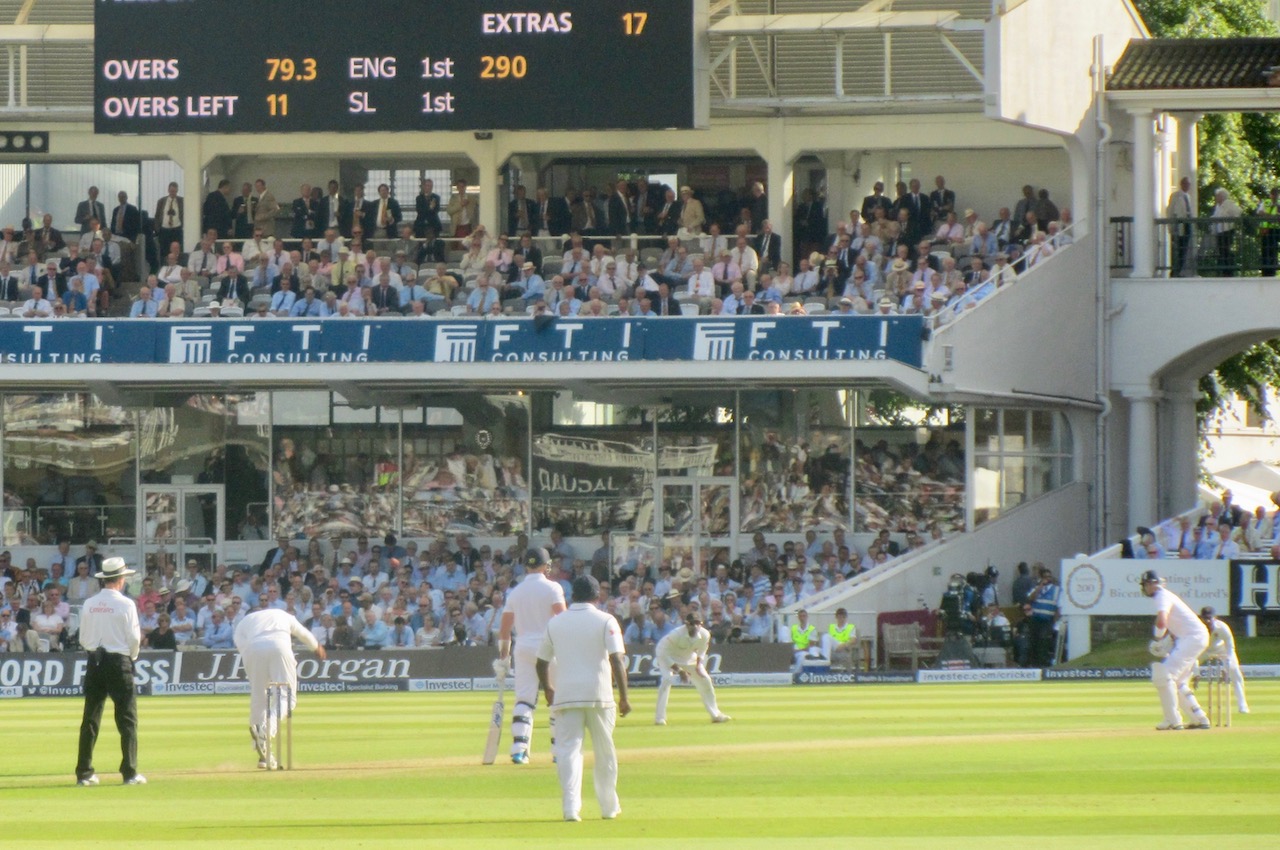
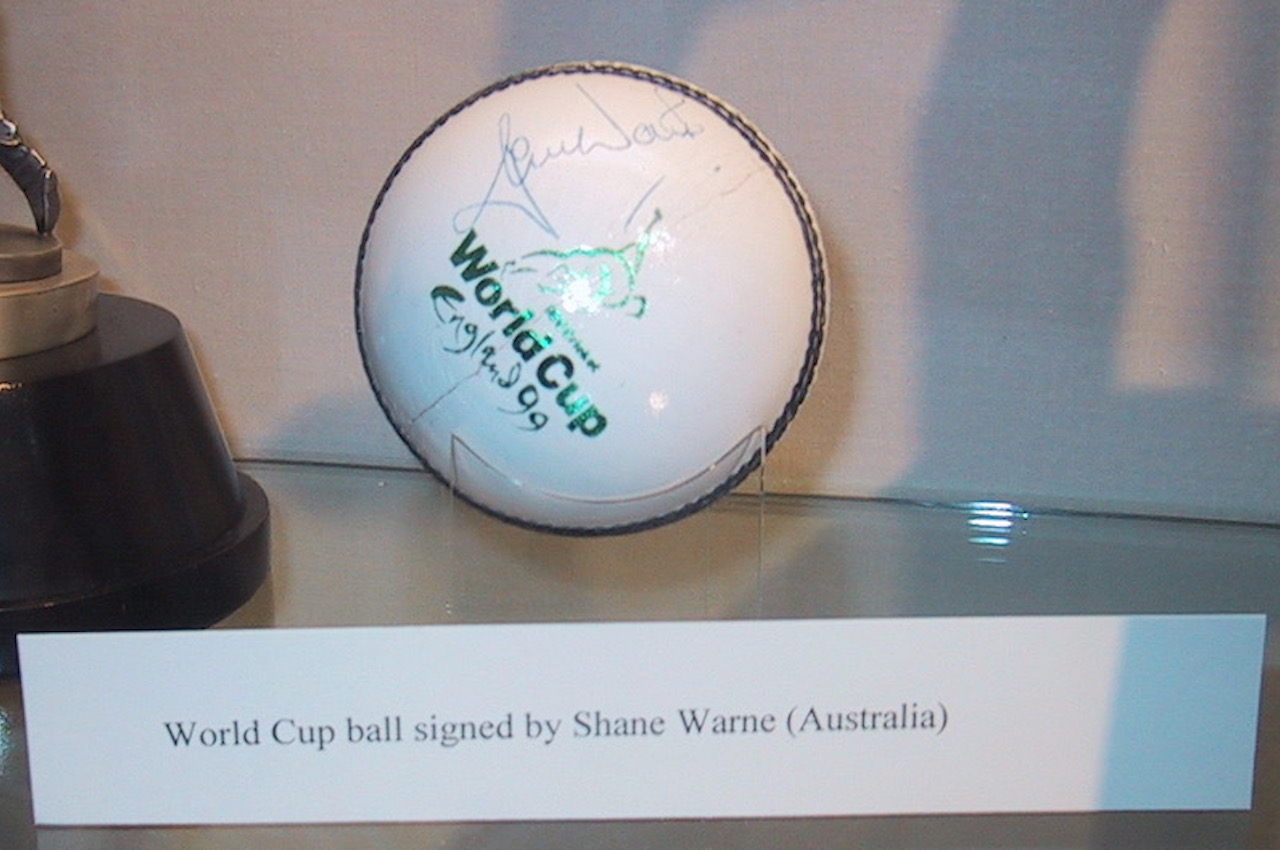
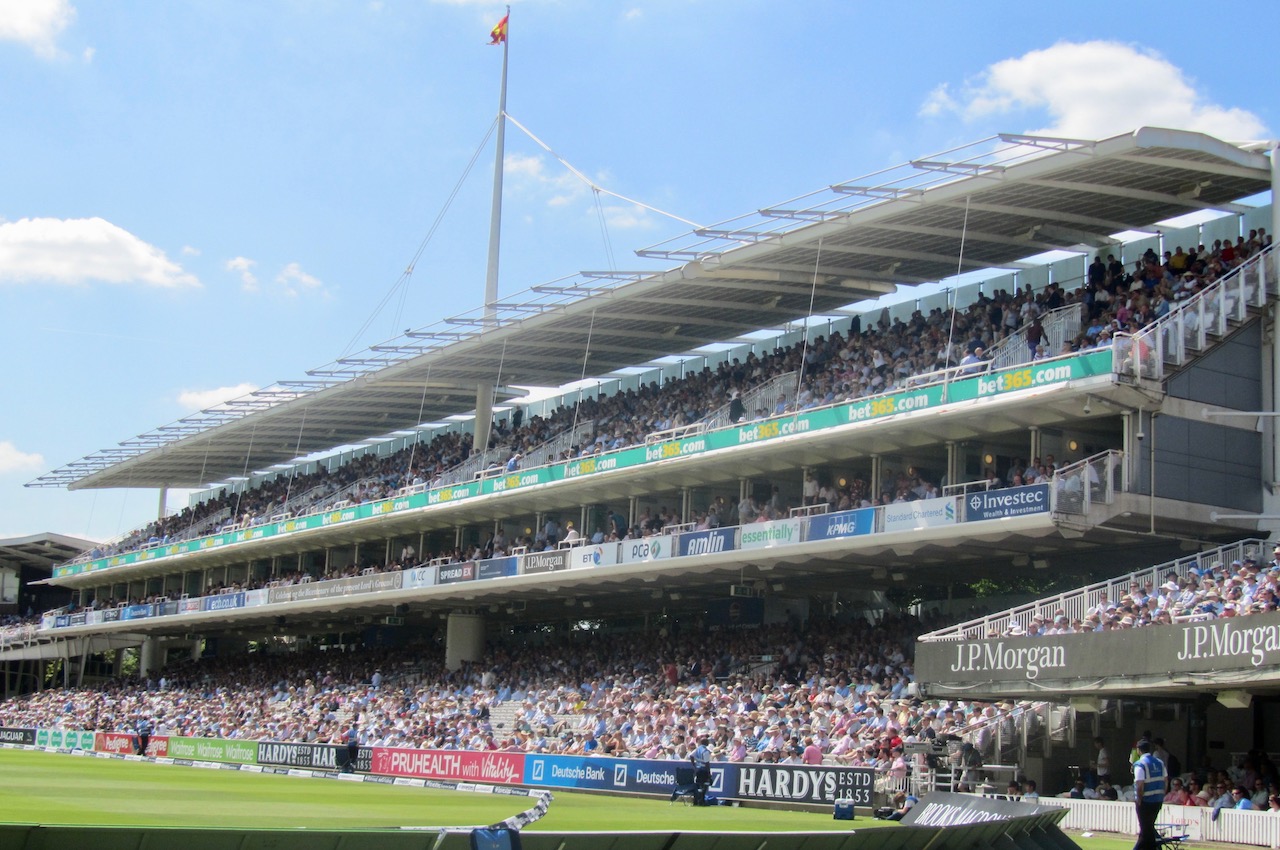
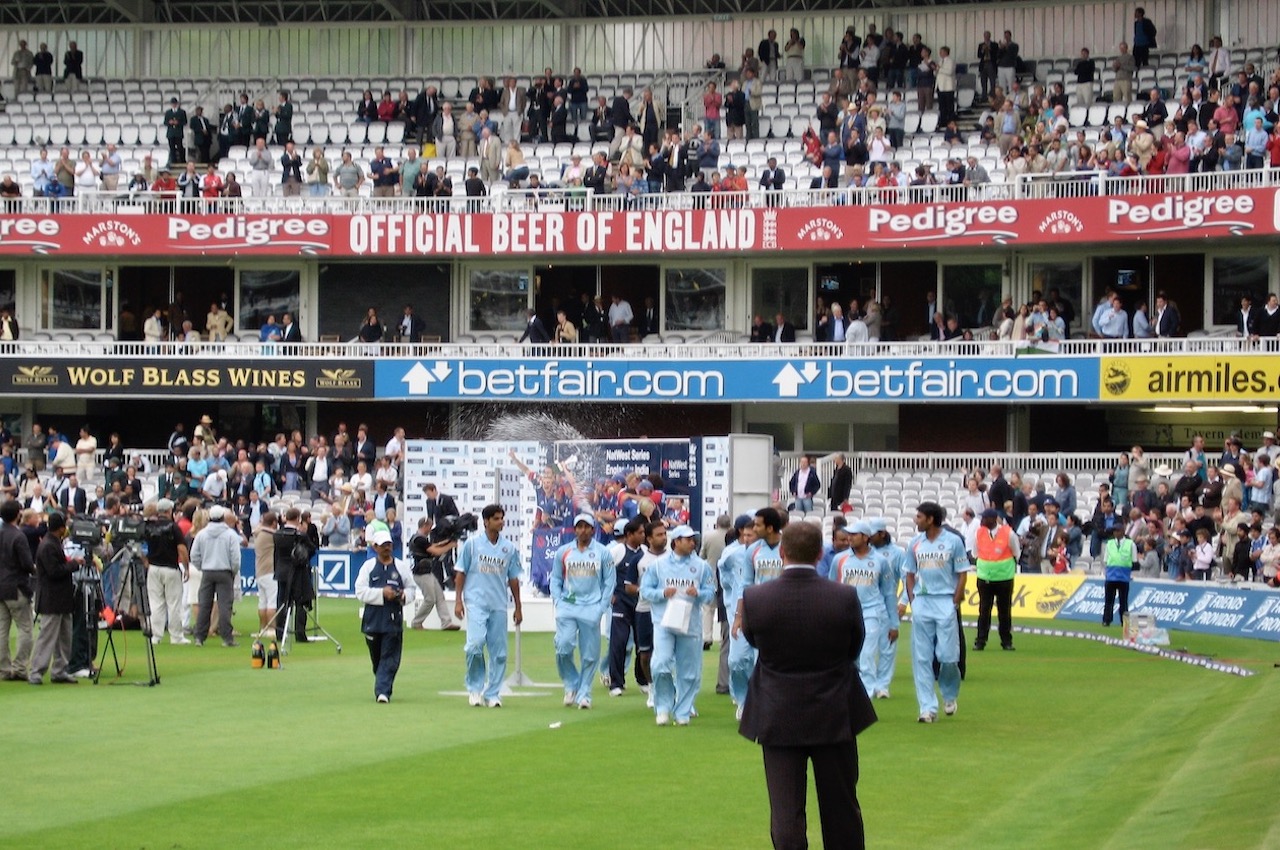
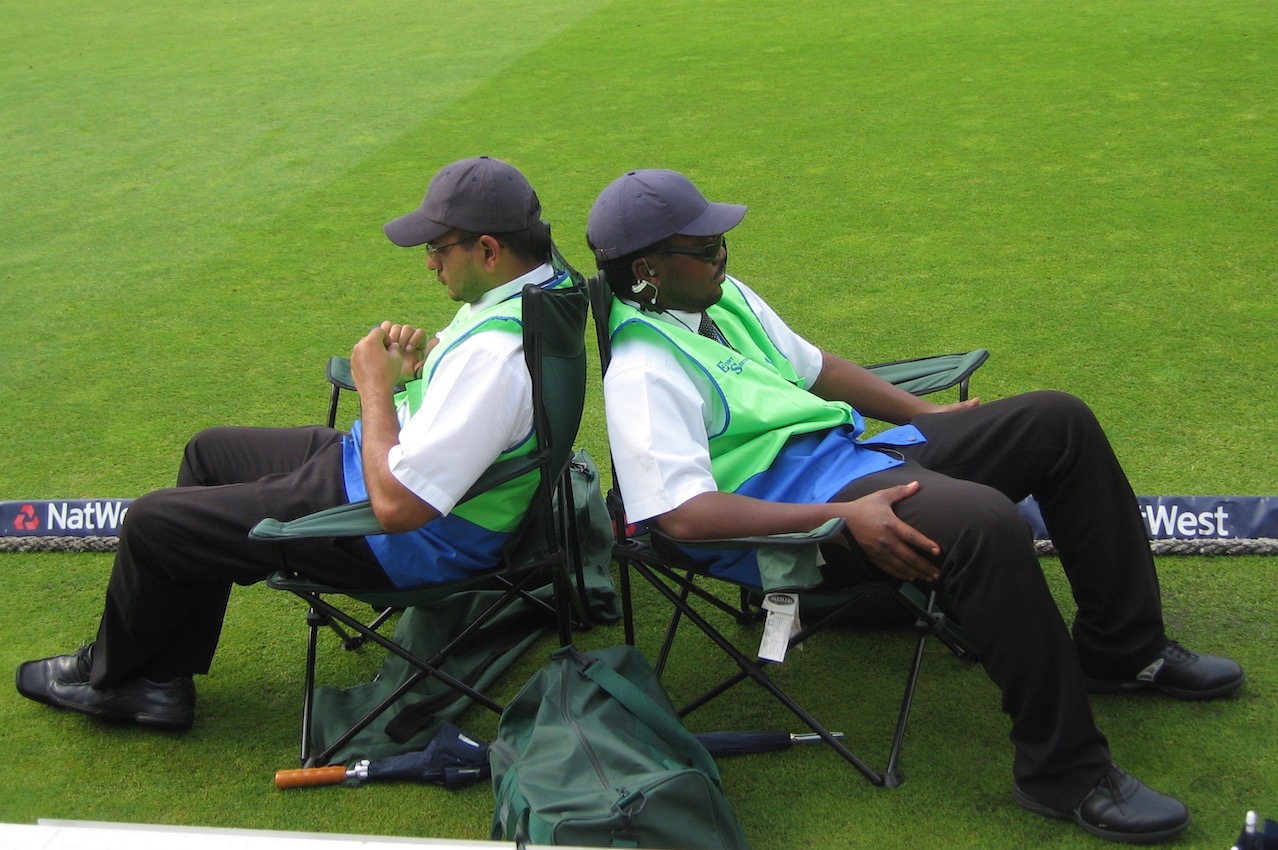
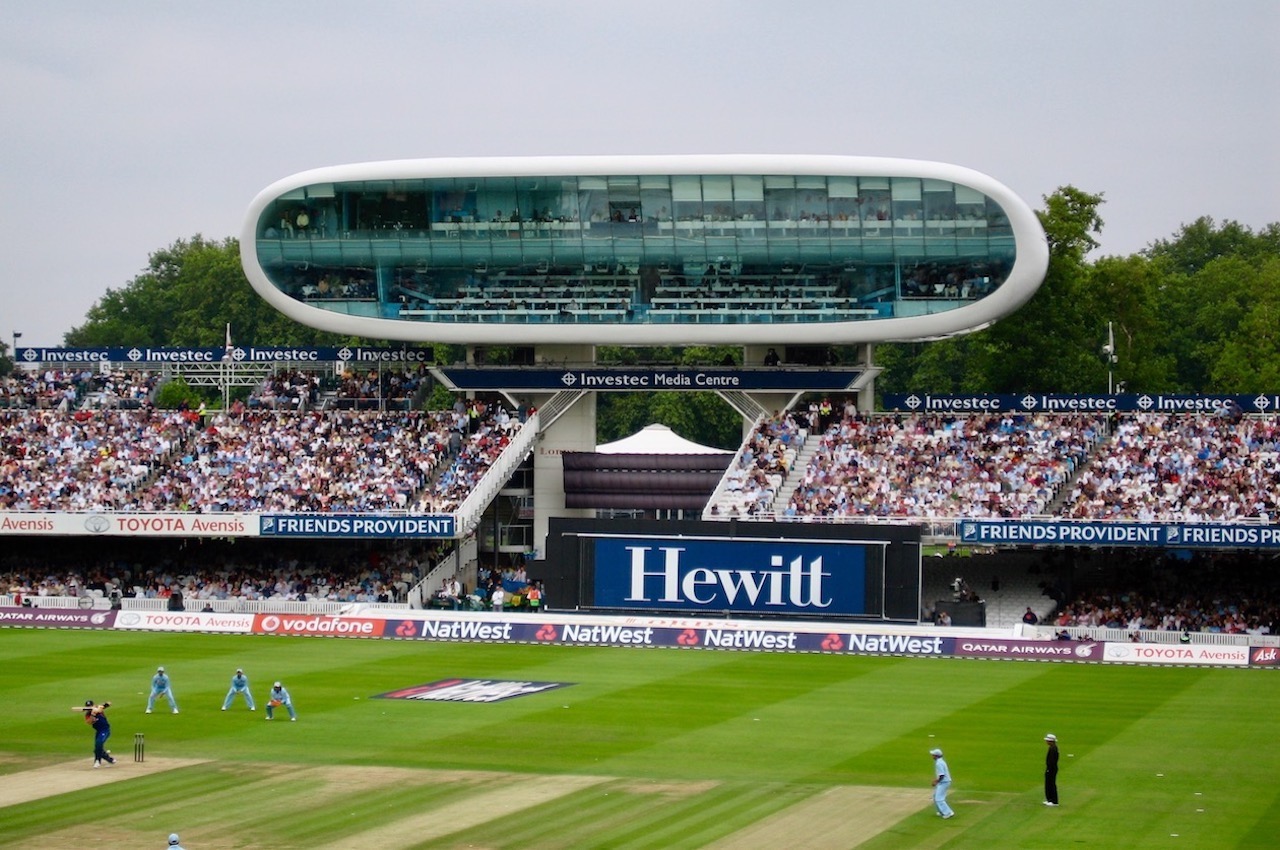
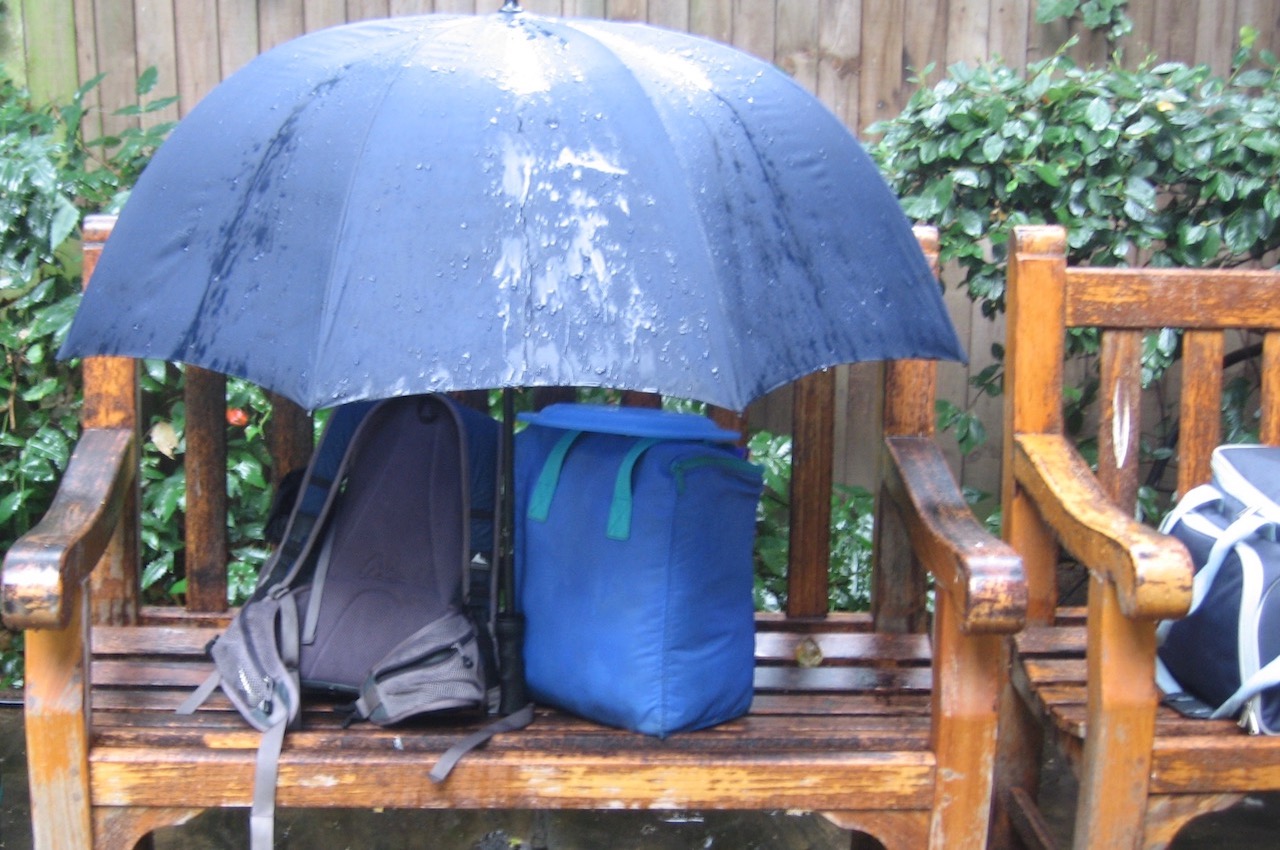
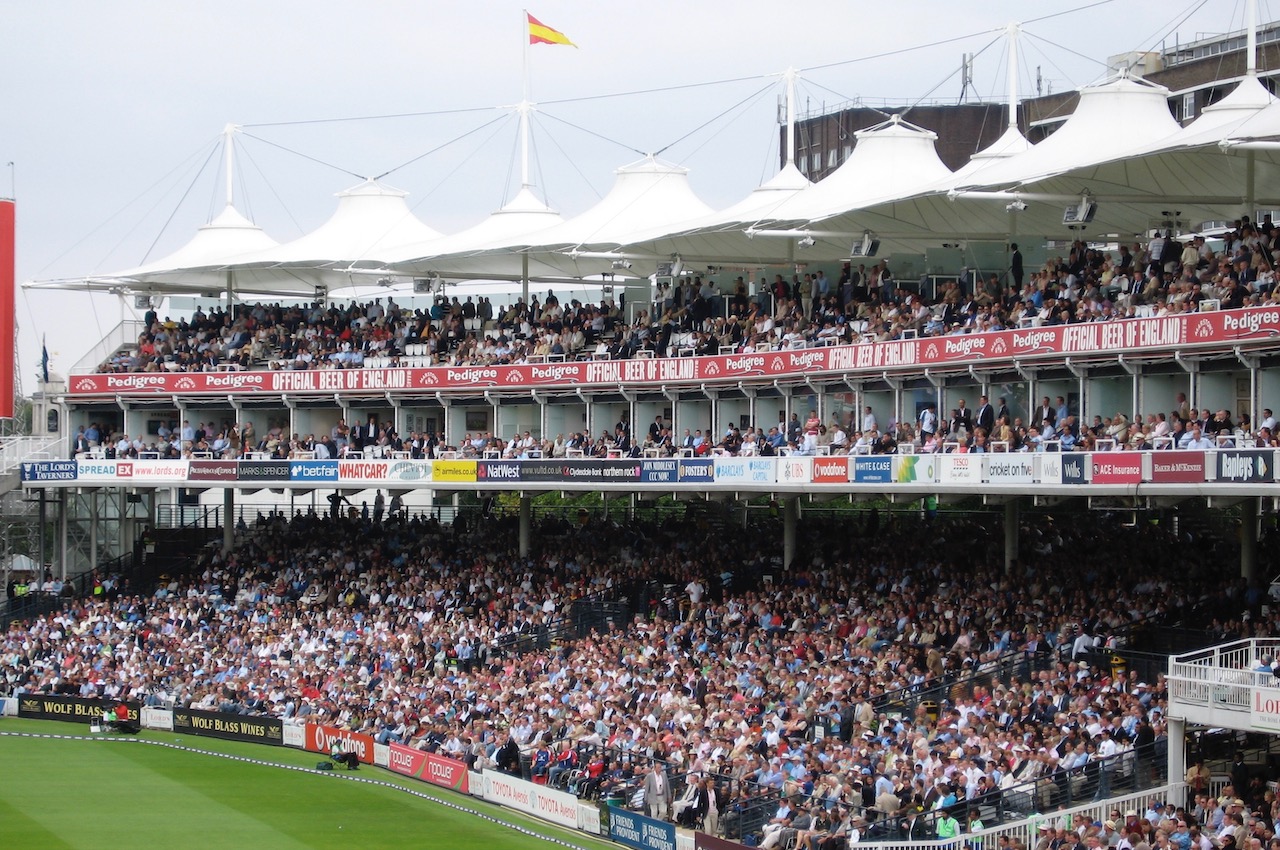
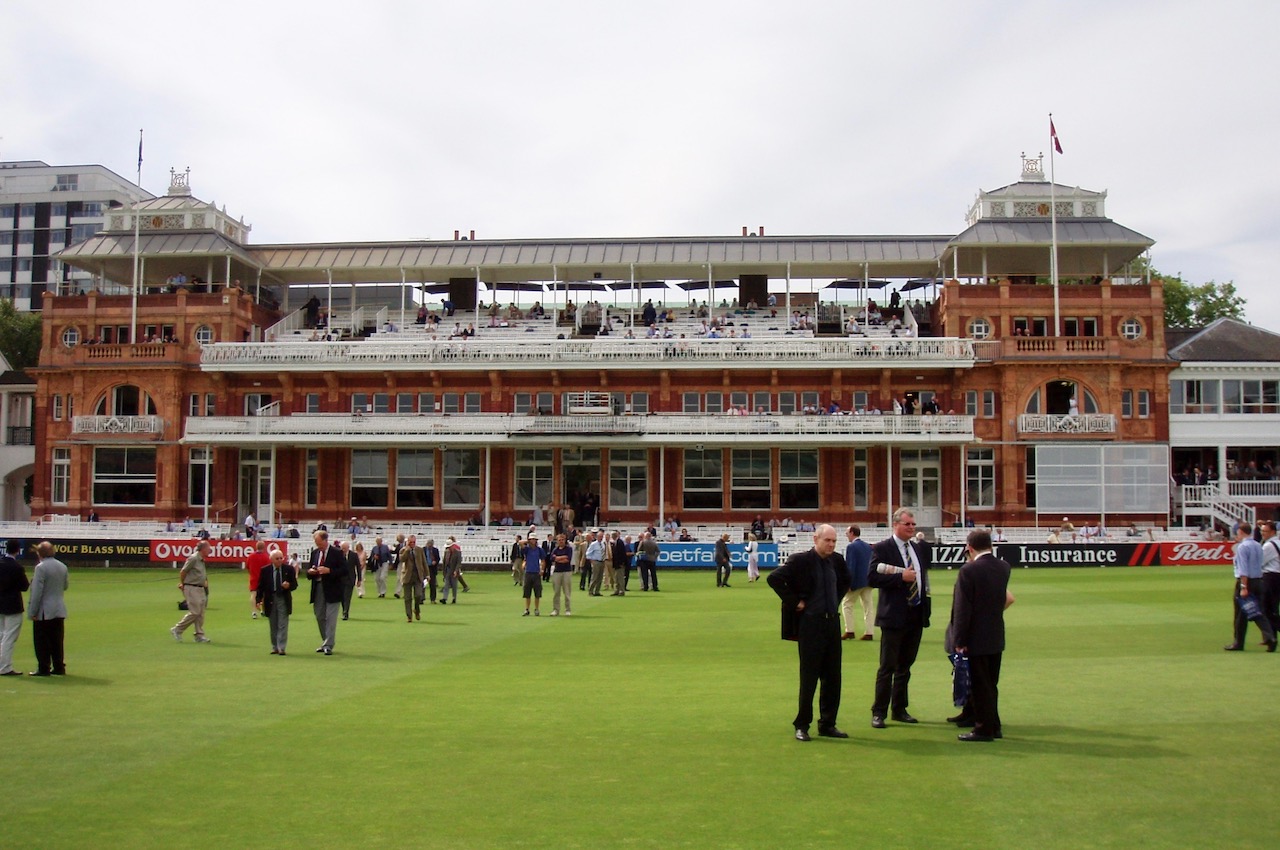
MORE INFO
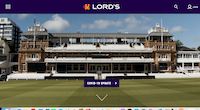 THE OFFICIAL LORD’S site has all the information you need to plan a memorable day at Lord’s – including those all-important dress regulations. READ MORE
THE OFFICIAL LORD’S site has all the information you need to plan a memorable day at Lord’s – including those all-important dress regulations. READ MORE
RELATED
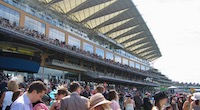 ROYAL ASCOT, Wimbledon and Glyndebourne are among the highlights of the UK’s summer social season. Find out how the coronavirus crisis is affecting them. READ MORE
ROYAL ASCOT, Wimbledon and Glyndebourne are among the highlights of the UK’s summer social season. Find out how the coronavirus crisis is affecting them. READ MORE
RECOMMENDED
 WELCOME TO OUR WORLD! Afaranwide’s home page – this is where you can find out about our latest posts and other highlights. READ MORE
WELCOME TO OUR WORLD! Afaranwide’s home page – this is where you can find out about our latest posts and other highlights. READ MORE
 TOP 10 VIRTUAL ATTRACTIONS: Many of the world’s most popular tourists sites are closed because of the coronavirus crisis, but you can still visit them virtually while you’re self-isolating. READ MORE
TOP 10 VIRTUAL ATTRACTIONS: Many of the world’s most popular tourists sites are closed because of the coronavirus crisis, but you can still visit them virtually while you’re self-isolating. READ MORE
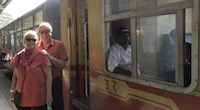 SHIMLA, QUEEN OF THE HILLS: Government officials once retreated to Shimla in the foothills of the Himalayas to escape India’s blazing hot summers. Now tourists make the same journey. READ MORE
SHIMLA, QUEEN OF THE HILLS: Government officials once retreated to Shimla in the foothills of the Himalayas to escape India’s blazing hot summers. Now tourists make the same journey. READ MORE
 TEN THINGS WE LEARNED: Our up-to-the-minute guide to creating a website, one step at a time. The costs, the mistakes – it’s what we wish we’d known when we started blogging. READ MORE
TEN THINGS WE LEARNED: Our up-to-the-minute guide to creating a website, one step at a time. The costs, the mistakes – it’s what we wish we’d known when we started blogging. READ MORE
 TROUBLED TIMES FOR EXPATS: Moving abroad can seem an idyllic prospect, but what happens when sudden upheavals or the inescapable realities of life intrude? READ MORE
TROUBLED TIMES FOR EXPATS: Moving abroad can seem an idyllic prospect, but what happens when sudden upheavals or the inescapable realities of life intrude? READ MORE
LET'S KEEP IN TOUCH!
Inside Lord's, the
Home of Cricket

COLIN SIMPSON
THE eyes of the sporting world – or at least the parts of it that play cricket – were trained on Lord’s one Sunday last year for the tumultuous and dramatic final of the World Cup.
Ten weeks of matches at grounds across England and in Wales reached a climax as England beat New Zealand by the narrowest of margins.
The drama, played in front of packed stands, was a reminder of Lord’s unique character and qualities as a sporting venue. For the UK’s armchair fans, it was the first chance to watch live cricket on terrestrial TV since 2005.
The spotlight will swing back to the ground next week as the Lord’s Test – one of the highlights of the British sporting summer – gets underway on Wednesday. England play Australia in the second Ashes Test of the five-match series, and the home side will be hoping to regroup after losing the first Test at Birmingham’s Edgbaston ground.
Lord’s is the home of both cricket and Marylebone Cricket Club, which owns the ground and is one of the world’s great clubs.
So what gives with these two institutions, one a storied sports venue and the other a venerable private members’ club? What makes them so special?
Laying Down the Law for More Than Two Centuries

THE current Lord’s is the third cricket ground to bear the name. The first was opened by entrepreneur and cricketer Thomas Lord in Marylebone in 1787, the year MCC was founded as a gentleman’s club. The following year MCC drew up the first laws of cricket. Lord opened a second ground nearby in 1809 before moving again to the current site in St John’s Wood in 1814. In 1877, Middlesex County Cricket Club started playing at Lord’s, where they remain to this day. In 1884, the ground hosted the first Test, England trouncing Australia (oh happy days!)
The Waiting Game: Becoming a Member

MCC membership is highly prized, so patience is needed as there’s a (wait for it!) 29-year waiting list. The length of time varies over the years – I was allowed in after just 20 years. The joke is that prospective members scour the obituary pages of the Daily Telegraph to see whether any members have died, as this would nudge them up the waiting list. You have to be nominated by a full member, seconded by another, sponsored by a third, and endorsed by a committee member or other official. I was interviewed at Lord’s by the official who endorsed my application. I went along in midwinter early in 1997 at a time when the old grandstand had been bulldozered and construction of the sleek new one had yet to begin. The grey skies, bitter cold and the gap where the stand had been created a very different view from the familiar sun-bathed image of the ground in high summer. We met in the Committee Room and had a cordial chat that seemed designed to ensure I was a genuine cricket fan rather than someone just seeking the kudos of belonging to one of the world’s leading clubs. Members include former prime ministers Sir John Major, David Cameron and Theresa May, the Queen’s husband Prince Philip and her heir, Prince Charles, and Sir Mick Jagger and Eric Clapton. My full membership came through in 2016, giving me access to Tests, one-day internationals and other matches at Lord’s. Annual subscriptions range from £563 for those living within 40 miles of central London down to £130 for “abroad list” members like me. While on the waiting list, candidates are offered associate membership, which gives access to Lord’s on some big-match days, plus other benefits. There are 18,000 full members and 4,000 associate members. Cricketers who turn out for MCC’s teams can be fast-tracked to player’s membership.
Lord's and Ladies: Role in the Game, Reputation

PART of MCC’s prestige comes from its position as the body that draws up the laws of the game. It also presents itself as the champion of what it describes as the “spirit of cricket”. It used to have an even more prominent role – until 1993 it ran the game worldwide, and the England team toured under its name until 1977 and wore its colours until 1997. MCC supports the game in various ways – for example, it played an important role in encouraging the emergence of the Afghanistan team. MCC is often seen as a rather staid and stuffy organisation with an ageing male membership, but has made efforts to shrug this off. Most significantly, after operating as a men-only bastion for more than two centuries, it voted to allow women to join in 1998. A record 134 women became full members this year.
Headquarters: The Pavilion and the Long Room

IF LORD’S is the home of cricket, the Pavilion – and particularly the Long Room inside – is its spiritual epicentre. The room is aptly named, a long, high space stretching from north to south along the central part of the building between the square towers at either end. Members gather here to watch play, perched on tall, heavy stools that let them see over the window ledges. Famously, the players walk down from the changing rooms upstairs and pass through this room on their way out through the two doors and the little gate beyond that lead to the field of play. The members invariably applaud members of both teams, though very occasionally they may stay silent if they feel a returning batsman has given his wicket away foolishly or somehow offended the spirit of the game. If the atmosphere in the ground tends to be subdued, in the Long Room it can approach the sepulchral even during a major match. There tends to be little conversation as the members follow the play. Still, it’s such a famous place that it’s always a thrill to walk in there, even if you don’t always feel inclined to tarry long (for some reason, when writing about MCC and Lord’s you can’t help sounding like traditionalist British politician Jacob Rees-Mogg). The walls are hung with paintings of cricket matches, and there are historic bats and other items from the museum’s collection on display. Some of the portraits of great players are outstanding. Members can use other parts of the Pavilion, such as the Old Library and the Reading Room.
Other Stands and Facilities

LORD’S is noted for the variety and quality of its stands and other buildings, and is undertaking an ambitious rebuilding programme. The stands are in a variety of styles that somehow comes together to form a distinctive and coherent whole. The Warner, Tavern and Allan stands are reserved for MCC members and their guests, while the Grandstand and the Mound, Compton and Edrich stands are open to the ticket-buying public. The space-age media centre, a cause of consternation among more conservative members when it was built in 1999, has become a much-loved feature of the ground. The next stage of the rebuilding programme will involve replacing the Compton and Edrich stands and adding catering facilities and extra seats. An oddity of the Lord’s playing field is its famous slope – looking out from the pavilion, the right-hand boundary is 2.5 metres lower than the left-hand one. This sometimes causes problems for bowlers who are unfamiliar with the ground. Away from the playing area, there is one of the world’s oldest sport museums which has an outstanding collection of cricket-related items, including the famous yet diminutive Ashes urn. The library has more than 20,000 cricket books and other documents. There is also a court for those who play real tennis, the arcane original version of the game.
Match-Day Experience

THE noisy atmosphere at the World Cup final was not typical of Lord’s, where you are more likely to hear a hum from the crowd than a roar. It is, nevertheless, a fantastic place to watch cricket, with great views from all parts of the ground. This is partly because of its relatively modest size, though the rebuilding work will increase its capacity from 28,500 to 31,000. This hardly compares with huge grounds in other countries – Melbourne Cricket Ground, for example, holds a shade over 100,000. Still, there is a wonderful air of expectancy in North London on a big-match day, such as the first day of an Ashes Test. Supporters stream from St John’s Wood Underground station wearing sun hats and clutching picnic baskets. And during matches there can be a buzz of excitement as a crowd-pleasing batsman strides out to the crease. The fact that fancy dress is banned also contributes to the relatively subdued atmosphere – at Edgbaston last week supporters turned up as President Trump, the Pope and his cardinals, Laurel and Hardy, and Britain’s Queen. And the Barmy Army, a group of England fans known for loud chants, songs and trumpet playing, is not normally in evidence at Lord’s – musical instruments are banned, as are flags. One crowd tradition, in particular, fails to dispel the accusations of staidness sometimes levelled at MCC members. Supporters tend to grow restive during uneventful periods of play – this, contrary to the impression given in the World Cup final, can happen in cricket – and start a Mexican wave. The wave sweeps round the ground, with fans rising enthusiastically to their feet as it reaches them, until it reaches the Pavilion. There, members in their red-and-yellow ties remain firmly seated, earning resounding boos from the rest of the ground.
Pimm's, Anyone? Food and Drink

ON MATCH days there are numerous places all over Lord’s where visitors can buy something to eat and drink, ranging from the usual food court fare at the nursery end to the alfresco Harris Garden and smart restaurants. Members also have a wide choice in the areas reserved for them. The Long Room Bar stretches through the Pavilion on the ground floor immediately behind the Long Room. The tradition of public school dinners lingers there, so expect a roast, but there are other choices such as salads and perhaps a curry. A favourite place of mine, and many others, is the Bowlers’ Bar at the north end of the Pavilion, where you can take your beer outside and sit on the white benches to watch the cricket. There’s also a members’ lounge and a members’ bar. The members and guest stands have their own catering facilities, most notably those in the recently rebuilt Warner Stand. Many spectators in these areas prefer to bring their own food, often in cool boxes that may also contain a chilled bottle of Chablis. Lord’s is the only international cricket ground in the world that lets fans bring in alcohol. People used to have a seemingly endless supply of Champagne and wine in these boxes which they would consume steadily throughout the hours of play, though there are now pretty strict limits on how much alcohol you can bring in to the ground.
Rules, Regulations and Dress Codes

PART of the club’s stuffy reputation derives from its air of officiousness. Members are issued with a book of club rules AND a separate book of regulations, and the detailed dress codes have raised eyebrows. There was some amused comment when the club issued guides illustrated with photos showing what items of clothing were and were not allowed in various parts of the ground. For example, gentlemen entering the Pavilion on match days may not wear espadrilles, “beach-style flip-flops”, denim, combat-style trousers, camo gear or “torn, ripped or unclean clothing”. The Pavilion stewards enforce the rules and regulations with quiet zeal, and are particularly unsmiling if anyone moves to or from their seat during an over. On one occasion, a movement in the crowd near me distracted the batsman, causing him to halt play. A steward told the culprit, in a despairing tone of voice more suited to some major calamity: “Look what you’ve done – you’ve stopped the cricket.” However, Sue reports that the stewards in other parts of the ground treat her with the utmost courtesy and respect when I desert her and head off to the Pavilion for a slice of jam roly-poly at the tea interval (guests aren’t allowed in on big-match days).
Egg and Bacon

ONE of the joys of finally becoming an MCC member is that you’re allowed to wear the club’s famous red and yellow colours. Supposedly only members can do this, though I’m not sure what sanctions are taken against offending non-members. The first thing you do is buy a stirpey MCC tie. It doesn’t stop there, though. There’s a huge range of MCC merchandise in the members’ shop, and I was soon stocking up on red-and-yellow socks, boxer shorts, nightshirts (yes!), handkerchiefs, and keyrings, plus – to cover all eventualities – an umbrella and a sunhat. Some take it too far, though, and buy lurid blazers and caps in the club colours.
The Players Love It There Too

APPEARING at the home of the game is a highlight of any cricketer’s career, and those who perform well have their names honoured there permanently. The home and away dressing rooms each have honours boards, one for batsmen and one for bowlers. Anyone scoring 100 runs or taking five wickets in an international match has their name written on these boards, joining a roll-call of some of the most famous names in the game. Honours boards for women players were introduced this year. Outstanding all-rounders such as Sir Ian Botham and Andrew Flintoff have their names on both boards. Cricketers often speak enthusiastically about the experience of playing at “headquarters”. The quality of the food served in the players dining room gets special mention, and many appreciate the way they’re treated by the staff. Foreign players’ enthusiasm for appearing at Lord’s sometimes backfires against England. Many raise their game when they take that spine-tingling walk through the Long Room in the footsteps of the greats, past the applauding members and out on to the hallowed turf. As a result, England sometimes struggle there.
So there you have it, not just an outstanding cricket ground but one of the world’s great sports venues. And a unique, historic cricket club.
The only problem is that, having written this piece, I now really wish I was going to the Test next week.
Top tip: If you don’t want to wait 29 years for membership but would like to see the Long Room and the rest of the Pavilion then you can book a tour of Lord’s.
Main photo: The Lord’s Pavilion.
Updated January 2020










MORE INFO
 THE OFFICIAL LORD’S site has all the information you need to plan a memorable day at Lord’s – including those all-important dress regulations. READ MORE
THE OFFICIAL LORD’S site has all the information you need to plan a memorable day at Lord’s – including those all-important dress regulations. READ MORE
RELATED
 ROYAL ASCOT, Wimbledon and Glyndebourne are among the highlights of the UK’s summer social season. Find out how the coronavirus crisis is affecting them. READ MORE
ROYAL ASCOT, Wimbledon and Glyndebourne are among the highlights of the UK’s summer social season. Find out how the coronavirus crisis is affecting them. READ MORE
RECOMMENDED
 WELCOME TO OUR WORLD! Afaranwide’s home page – this is where you can find out about our latest posts and other highlights. READ MORE
WELCOME TO OUR WORLD! Afaranwide’s home page – this is where you can find out about our latest posts and other highlights. READ MORE
 TOP 10 VIRTUAL ATTRACTIONS: Many of the world’s most popular tourists sites are closed because of the coronavirus crisis, but you can still visit them virtually while you’re self-isolating. READ MORE
TOP 10 VIRTUAL ATTRACTIONS: Many of the world’s most popular tourists sites are closed because of the coronavirus crisis, but you can still visit them virtually while you’re self-isolating. READ MORE
 SHIMLA, QUEEN OF THE HILLS: Government officials once retreated to Shimla in the foothills of the Himalayas to escape India’s blazing hot summers. Now tourists make the same journey. READ MORE
SHIMLA, QUEEN OF THE HILLS: Government officials once retreated to Shimla in the foothills of the Himalayas to escape India’s blazing hot summers. Now tourists make the same journey. READ MORE
 TEN THINGS WE LEARNED: Our up-to-the-minute guide to creating a website, one step at a time. The costs, the mistakes – it’s what we wish we’d known when we started blogging. READ MORE
TEN THINGS WE LEARNED: Our up-to-the-minute guide to creating a website, one step at a time. The costs, the mistakes – it’s what we wish we’d known when we started blogging. READ MORE
 TROUBLED TIMES FOR EXPATS: Moving abroad can seem an idyllic prospect, but what happens when sudden upheavals or the inescapable realities of life intrude? READ MORE
TROUBLED TIMES FOR EXPATS: Moving abroad can seem an idyllic prospect, but what happens when sudden upheavals or the inescapable realities of life intrude? READ MORE
LET'S KEEP IN TOUCH!
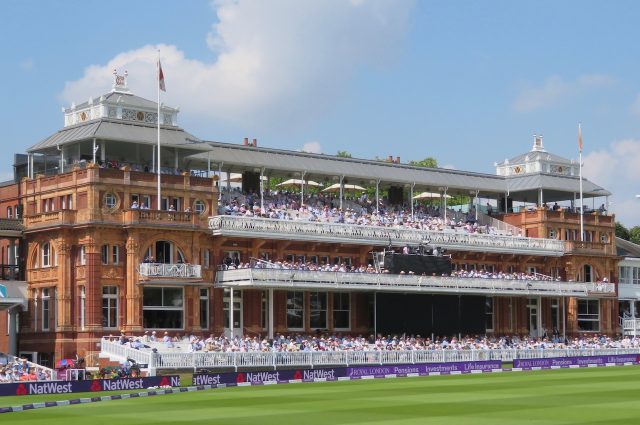
Inside Lord's, the
Home of Cricket

COLIN SIMPSON
THE eyes of the sporting world – or at least the parts of it that play cricket – were trained on Lord’s one Sunday last year for the tumultuous and dramatic final of the World Cup.
Ten weeks of matches at grounds across England and in Wales reached a climax as England beat New Zealand by the narrowest of margins.
The drama, played in front of packed stands, was a reminder of Lord’s unique character and qualities as a sporting venue. For the UK’s armchair fans, it was the first chance to watch live cricket on terrestrial TV since 2005.
The spotlight will swing back to the ground next week as the Lord’s Test – one of the highlights of the British sporting summer – gets underway on Wednesday. England play Australia in the second Ashes Test of the five-match series, and the home side will be hoping to regroup after losing the first Test at Birmingham’s Edgbaston ground.
Lord’s is the home of both cricket and Marylebone Cricket Club, which owns the ground and is one of the world’s great clubs.
So what gives with these two institutions, one a storied sports venue and the other a venerable private members’ club? What makes them so special?
Laying Down the Law for More Than Two Centuries

THE current Lord’s is the third cricket ground to bear the name. The first was opened by entrepreneur and cricketer Thomas Lord in Marylebone in 1787, the year MCC was founded as a gentleman’s club. The following year MCC drew up the first laws of cricket.
Lord opened a second ground nearby in 1809 before moving again to the current site in St John’s Wood in 1814. In 1877, Middlesex County Cricket Club started playing at Lord’s, where they remain to this day. In 1884, the ground hosted the first Test, England trouncing Australia (oh happy days!)
The Waiting Game: Becoming a Member

MCC membership is highly prized, so patience is needed as there’s a (wait for it!) 29-year waiting list. The length of time varies over the years – I was allowed in after just 20 years. The joke is that prospective members scour the obituary pages of the Daily Telegraph to see whether any members have died, as this would nudge them up the waiting list.
You have to be nominated by a full member, seconded by another, sponsored by a third, and endorsed by a committee member or other official. I was interviewed at Lord’s by the official who endorsed my application. I went along in midwinter early in 1997 at a time when the old grandstand had been bulldozered and construction of the sleek new one had yet to begin.
The grey skies, bitter cold and the gap where the stand had been created a very different view from the familiar sun-bathed image of the ground in high summer. We met in the Committee Room and had a cordial chat that seemed designed to ensure I was a genuine cricket fan rather than someone just seeking the kudos of belonging to one of the world’s leading clubs.
Members include former prime ministers Sir John Major, David Cameron and Theresa May, the Queen’s husband Prince Philip and her heir, Prince Charles, and Sir Mick Jagger and Eric Clapton.
My full membership came through in 2016, giving me access to Tests, one-day internationals and other matches at Lord’s. Annual subscriptions range from £563 for those living within 40 miles of central London down to £130 for “abroad list” members like me. While on the waiting list, candidates are offered associate membership, which gives access to Lord’s on some big-match days, plus other benefits.
There are 18,000 full members and 4,000 associate members. Cricketers who turn out for MCC’s teams can be fast-tracked to player’s membership.
Lord's and Ladies: Role in the Game, Reputation

PART of MCC’s prestige comes from its position as the body that draws up the laws of the game. It also presents itself as the champion of what it describes as the “spirit of cricket”. It used to have an even more prominent role – until 1993 it ran the game worldwide, and the England team toured under its name until 1977 and wore its colours until 1997.
MCC supports the game in various ways – for example, it played an important role in encouraging the emergence of the Afghanistan team. MCC is often seen as a rather staid and stuffy organisation with an ageing male membership, but has made efforts to shrug this off. Most significantly, after operating as a men-only bastion for more than two centuries, it voted to allow women to join in 1998. A record 134 women became full members this year.
Headquarters: The Pavilion and the Long Room

IF LORD’S is the home of cricket, the Pavilion – and particularly the Long Room inside – is its spiritual epicentre. The room is aptly named, a long, high space stretching from north to south along the central part of the building between the square towers at either end.
Members gather here to watch play, perched on tall, heavy stools that let them see over the window ledges. Famously, the players walk down from the changing rooms upstairs and pass through this room on their way out through the two doors and the little gate beyond that lead to the field of play.
The members invariably applaud members of both teams, though very occasionally they may stay silent if they feel a returning batsman has given his wicket away foolishly or somehow offended the spirit of the game. If the atmosphere in the ground tends to be subdued, in the Long Room it can approach the sepulchral even during a major match. There tends to be little conversation as the members follow the play.
Still, it’s such a famous place that it’s always a thrill to walk in there, even if you don’t always feel inclined to tarry long (for some reason, when writing about MCC and Lord’s you can’t help sounding like traditionalist British politician Jacob Rees-Mogg). The walls are hung with paintings of cricket matches, and there are historic bats and other items from the museum’s collection on display. Some of the portraits of great players are outstanding. Members can use other parts of the Pavilion, such as the Old Library and the Reading Room.
Other Stands and Facilities

LORD’S is noted for the variety and quality of its stands and other buildings, and is undertaking an ambitious rebuilding programme. The stands are in a variety of styles that somehow comes together to form a distinctive and coherent whole. The Warner, Tavern and Allan stands are reserved for MCC members and their guests, while the Grandstand and the Mound, Compton and Edrich stands are open to the ticket-buying public.
The space-age media centre, a cause of consternation among more conservative members when it was built in 1999, has become a much-loved feature of the ground. The next stage of the rebuilding programme will involve replacing the Compton and Edrich stands and adding catering facilities and extra seats.
An oddity of the Lord’s playing field is its famous slope – looking out from the pavilion, the right-hand boundary is 2.5 metres lower than the left-hand one.
This sometimes causes problems for bowlers who are unfamiliar with the ground. Away from the playing area, there is one of the world’s oldest sport museums which has an outstanding collection of cricket-related items, including the famous yet diminutive Ashes urn.
The library has more than 20,000 cricket books and other documents. There is also a court for those who play real tennis, the arcane original version of the game.
Match-Day Experience

THE noisy atmosphere at the World Cup final was not typical of Lord’s, where you are more likely to hear a hum from the crowd than a roar. It is, nevertheless, a fantastic place to watch cricket, with great views from all parts of the ground. This is partly because of its relatively modest size, though the rebuilding work will increase its capacity from 28,500 to 31,000.
This hardly compares with huge grounds in other countries – Melbourne Cricket Ground, for example, holds a shade over 100,000. Still, there is a wonderful air of expectancy in North London on a big-match day, such as the first day of an Ashes Test. Supporters stream from St John’s Wood Underground station wearing sun hats and clutching picnic baskets. And during matches there can be a buzz of excitement as a crowd-pleasing batsman strides out to the crease.
The fact that fancy dress is banned also contributes to the relatively subdued atmosphere – at Edgbaston last week supporters turned up as President Trump, the Pope and his cardinals, Laurel and Hardy, and Britain’s Queen. And the Barmy Army, a group of England fans known for loud chants, songs and trumpet playing, is not normally in evidence at Lord’s – musical instruments are banned, as are flags.
One crowd tradition, in particular, fails to dispel the accusations of staidness sometimes levelled at MCC members. Supporters tend to grow restive during uneventful periods of play – this, contrary to the impression given in the World Cup final, can happen in cricket – and start a Mexican wave. The wave sweeps round the ground, with fans rising enthusiastically to their feet as it reaches them, until it reaches the Pavilion. There, members in their red-and-yellow ties remain firmly seated, earning resounding boos from the rest of the ground.
Pimm's, Anyone? Food and Drink

ON MATCH days there are numerous places all over Lord’s where visitors can buy something to eat and drink, ranging from the usual food court fare at the nursery end to the alfresco Harris Garden and smart restaurants. Members also have a wide choice in the areas reserved for them. The Long Room Bar stretches through the Pavilion on the ground floor immediately behind the Long Room.
The tradition of public school dinners lingers there, so expect a roast, but there are other choices such as salads and perhaps a curry. A favourite place of mine, and many others, is the Bowlers’ Bar at the north end of the Pavilion, where you can take your beer outside and sit on the white benches to watch the cricket. There’s also a members’ lounge and a members’ bar.
The members and guest stands have their own catering facilities, most notably those in the recently rebuilt Warner Stand. Many spectators in these areas prefer to bring their own food, often in cool boxes that may also contain a chilled bottle of Chablis. Lord’s is the only international cricket ground in the world that lets fans bring in alcohol.
People used to have a seemingly endless supply of Champagne and wine in these boxes which they would consume steadily throughout the hours of play, though there are now pretty strict limits on how much alcohol you can bring in to the ground.
Rules, Regulations and Dress Codes

PART of the club’s stuffy reputation derives from its air of officiousness. Members are issued with a book of club rules AND a separate book of regulations, and the detailed dress codes have raised eyebrows.
There was some amused comment when the club issued guides illustrated with photos showing what items of clothing were and were not allowed in various parts of the ground.
For example, gentlemen entering the Pavilion on match days may not wear espadrilles, “beach-style flip-flops”, denim, combat-style trousers, camo gear or “torn, ripped or unclean clothing”.
The Pavilion stewards enforce the rules and regulations with quiet zeal, and are particularly unsmiling if anyone moves to or from their seat during an over.
On one occasion, a movement in the crowd near me distracted the batsman, causing him to halt play. A steward told the culprit, in a despairing tone of voice more suited to some major calamity: “Look what you’ve done – you’ve stopped the cricket.”
However, Sue reports that the stewards in other parts of the ground treat her with the utmost courtesy and respect when I desert her and head off to the Pavilion for a slice of jam roly-poly at the tea interval (guests aren’t allowed in on big-match days).
Egg and Bacon

ONE of the joys of finally becoming an MCC member is that you’re allowed to wear the club’s famous red and yellow colours. Supposedly only members can do this, though I’m not sure what sanctions are taken against offending non-members.
The first thing you do is buy a stirpey MCC tie. It doesn’t stop there, though. There’s a huge range of MCC merchandise in the members’ shop, and I was soon stocking up on red-and-yellow socks, boxer shorts, nightshirts (yes!), handkerchiefs, and keyrings, plus – to cover all eventualities – an umbrella and a sunhat. Some take it too far, though, and buy lurid blazers and caps in the club colours.
The Players Love It There Too

APPEARING at the home of the game is a highlight of any cricketer’s career, and those who perform well have their names honoured there permanently. The home and away dressing rooms each have honours boards, one for batsmen and one for bowlers.
Anyone scoring 100 runs or taking five wickets in an international match has their name written on these boards, joining a roll-call of some of the most famous names in the game.
Honours boards for women players were introduced this year. Outstanding all-rounders such as Sir Ian Botham and Andrew Flintoff have their names on both boards.
Cricketers often speak enthusiastically about the experience of playing at “headquarters”. The quality of the food served in the players dining room gets special mention, and many appreciate the way they’re treated by the staff.
Foreign players’ enthusiasm for appearing at Lord’s sometimes backfires against England. Many raise their game when they take that spine-tingling walk through the Long Room in the footsteps of the greats, past the applauding members and out on to the hallowed turf. As a result, England sometimes struggle there.
So there you have it, not just an outstanding cricket ground but one of the world’s great sports venues. And a unique, historic cricket club.
The only problem is that, having written this piece, I now really wish I was going to a Test next week.
Top tip: If you don’t want to wait 29 years for membership but would like to see the Long Room and the rest of the Pavilion then you can book a tour of Lord’s.
Main photo: The Lord’s Pavilion.
Updated January 2020










MORE INFO
 THE OFFICIAL LORD’S site has all the information you need to plan a memorable day at Lord’s – including those all-important dress regulations. READ MORE
THE OFFICIAL LORD’S site has all the information you need to plan a memorable day at Lord’s – including those all-important dress regulations. READ MORE
RELATED
 ROYAL ASCOT, Wimbledon and Glyndebourne are among the highlights of the UK’s summer social season. Find out how the coronavirus crisis is affecting them. READ MORE
ROYAL ASCOT, Wimbledon and Glyndebourne are among the highlights of the UK’s summer social season. Find out how the coronavirus crisis is affecting them. READ MORE
RECOMMENDED
 WELCOME TO OUR WORLD! Afaranwide’s home page – this is where you can find out about our latest posts and other highlights. READ MORE
WELCOME TO OUR WORLD! Afaranwide’s home page – this is where you can find out about our latest posts and other highlights. READ MORE
 TOP 10 VIRTUAL ATTRACTIONS: Many of the world’s most popular tourists sites are closed because of the coronavirus crisis, but you can still visit them virtually while you’re self-isolating. READ MORE
TOP 10 VIRTUAL ATTRACTIONS: Many of the world’s most popular tourists sites are closed because of the coronavirus crisis, but you can still visit them virtually while you’re self-isolating. READ MORE
 SHIMLA, QUEEN OF THE HILLS: Government officials once retreated to Shimla in the foothills of the Himalayas to escape India’s blazing hot summers. Now tourists make the same journey. READ MORE
SHIMLA, QUEEN OF THE HILLS: Government officials once retreated to Shimla in the foothills of the Himalayas to escape India’s blazing hot summers. Now tourists make the same journey. READ MORE
 TEN THINGS WE LEARNED: Our up-to-the-minute guide to creating a website, one step at a time. The costs, the mistakes – it’s what we wish we’d known when we started blogging. READ MORE
TEN THINGS WE LEARNED: Our up-to-the-minute guide to creating a website, one step at a time. The costs, the mistakes – it’s what we wish we’d known when we started blogging. READ MORE
 TROUBLED TIMES FOR EXPATS: Moving abroad can seem an idyllic prospect, but what happens when sudden upheavals or the inescapable realities of life intrude? READ MORE
TROUBLED TIMES FOR EXPATS: Moving abroad can seem an idyllic prospect, but what happens when sudden upheavals or the inescapable realities of life intrude? READ MORE